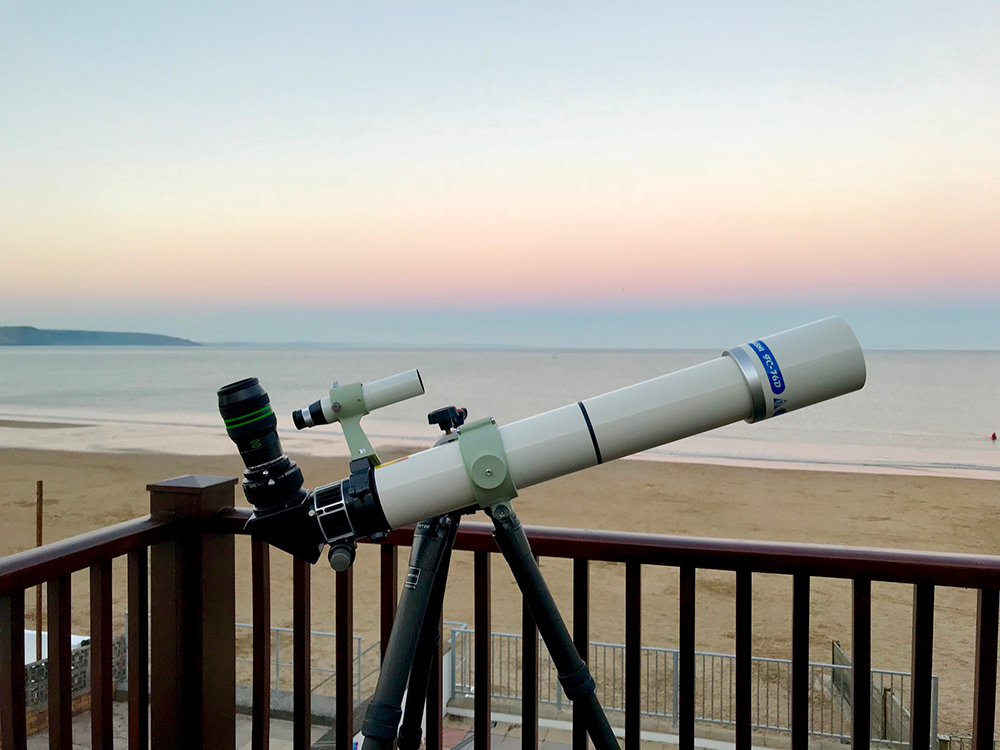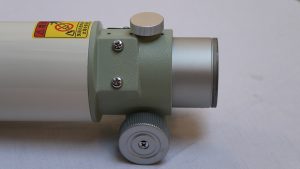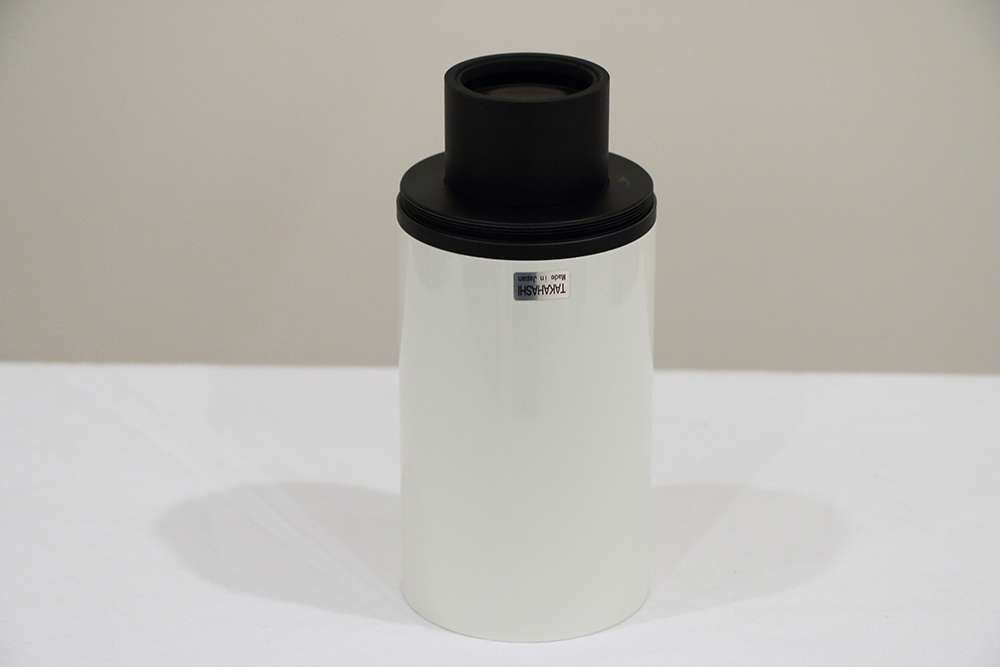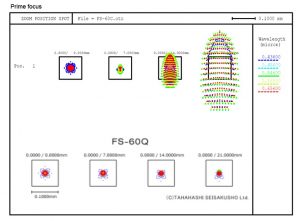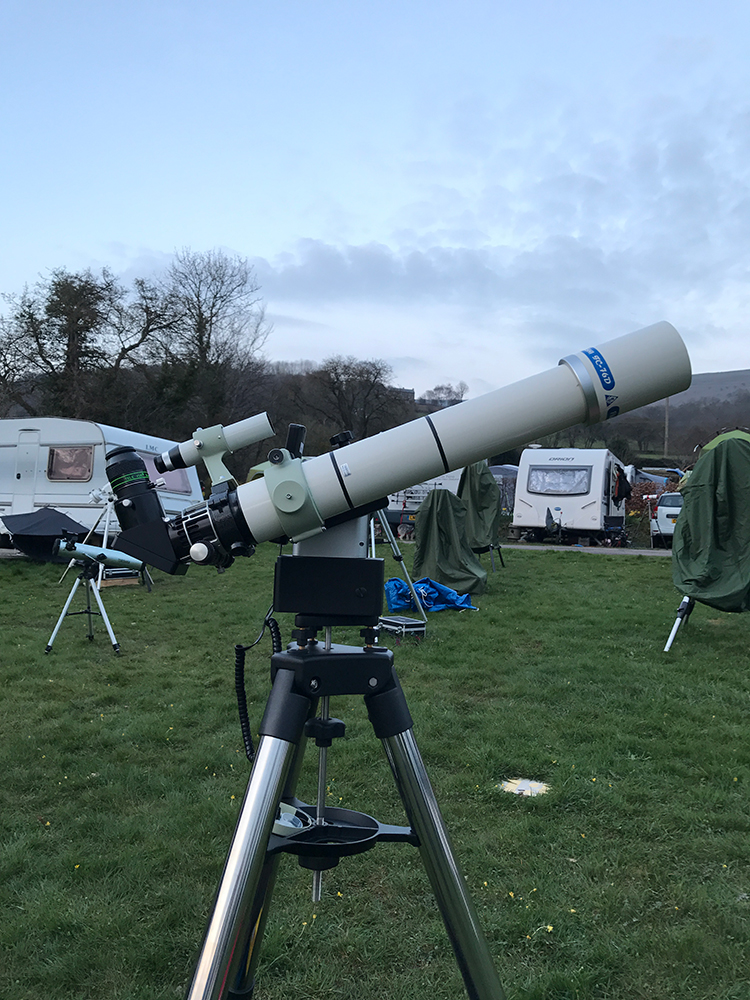The title of this review is not a typo. Anyone who is reasonably familiar with Takahashi telescopes, past and present, might well be scratching their heads and wondering what the FC-76Q is, believing that Takahashi has never released a 76mm quadruplet refractor. Tak-aficionados would be well within their rights to believe they are correct in that belief. Yet it exists.
A few years ago I purchased the FS-60 and the FC-76DC objective upgrade which simply screws in place of the FS-60 lens cell, converting the 60mm f/5.9 doublet into a very portable (as it splits in two) 76mm f/7.5 doublet (you can read the review of the FC-76 here). Having become a big fan of the high contrast, razor sharp views delivered by both scopes, I decided to purchase the 1.7x CQ module which retrofits the FS-60, turning it into an f/10 quadruplet super apo with even higher levels of performance than the already impressive standalone FS-60 (you can read the review of the FS-60 here).

I also stumbled across the scope at Astrofest in 2017 on a retailer stand in the exhibition area, though at the time, the individual I questioned knew little about what it was.
During a random Google search, I stumbled across a Japanese astronomical retailer website which suggested that the CQ module could also be used in conjunction with the FC-76 objective upgrade, converting it into an f/12.6 quadruplet super apo. I was under the impression the 1.7x CQ module was designed specifically for the FS-60 and somewhat perplexed and intrigued in equal measure on how it would behave when used with a different objective lens. Curiosity very quickly got the better of me and I put together the “Frankenstein” Takahashi FC-76Q.

The instructions for the FC-76 objective unit reveal the CQ module can be used to create an f/12.6 quadruplet.
Takahashi actually released this as a limited-edition package (known as the FC-76 DCU + EX-CQ) in Japan further confirming that this is a usable combination. In fact, had I bothered to read the instruction manual that came with the FC-76 Objective Unit, I would have long ago discovered this combination was indeed possible.
In practice you can put this scope together yourself without the need to actually purchase the base FS-60Q (you can read the review of the FS-60Q here). To do so, you would need a 2” Feathertouch focuser and Takahashi Adaptor (A20-302) (total £609) as well the FS-CB tube (part number TSK06211) (£116), the 1.7x CQ module (TKA20595 – £301), the FC-76DC objective upgrade (TFK07650 – £938), and a Clamshell (TKA20420Q – £120). That is quite a price tag for a 3” scope but only a few hundred pounds more to the standalone FC-76.
With the FC-76Q just being the integration of the CQ 1.7x module from the FS-60Q into the FC-76DCU, the base components are obviously the same as the 3” refractor.
The OTA and Lens
The Objective Unit is classic Takahashi with a pearl-white external paint finish with a silver accent around the lens cell and the “Takahashi-Green” lens cover. The same quality finish is found on the secondary focuser tube. Internally, both components are painted flat black with a couple of knife-edge baffles to minimise stray reflections that reduce contrast.

The anti-reflection coatings render the objective almost invisible, even with the point blank flash from a camera.
The basic FC-76 is a Steinheil configured doublet lens which has the positive fluorite element at the rear and a negative eco-glass mating element at the front. All elements are fully multi-coated and the quality of the coatings is first class, with the lens elements only revealing themselves via muted reflections of bright light sources. The lens sits in a perfectly machined, temperature compensating lens cell which is not much larger than the lens itself. To maintain the narrow 80mm diameter of main OTA (which matches the FS-60), the lens cell has no collimation screws and sits inside the dew shield, though over several years of ownership and thousands of miles travelled with the scope, it has maintained perfect collimation. That location does however provide me with my one criticism of design. The dew shield only extends a couple of inches in front of the objective lens and has proven insufficient to keep dew at bay on the worst of nights. The optics can also show some minor astigmatism during cool down on the most frigid of nights, but is a transient phenomena and not seen once acclimatised, which only takes a few minutes.
The Focuser
The standard equipment focuser for both the FS-60 and FC-76DCU is a precise and smooth single speed rack-and-pinion unit. Natively, the focuser will not accept 2” accessories, though an adaptor is available. However, the weakness of the focuser is the particularly short drawtube which only has around one inch of travel. Unfortunately for a visual observer, this means you can find yourself screwing in and removing supplied extension tubes as a means of course focus, with the fine adjustments from the focuser itself. This is quite honestly a bit of pain and as such I have swapped out the standard focuser for a light weight Feathertouch from Starlight instruments.

The feathertouch is precise and accepts 2″ accessories. Lacking a mounting for a finder, I use a 76mm tube ring.
Hardly needing any introduction, Feathertouch focusers are widely considered to be the finest available to amateur astronomers. Not only is the drawtube longer, eliminating the need for extension tubes, but it will also accept 2” equipment, and offers even more precision with a fine-focus reduction as standard.
The 1.7x CQ Module
Including the protruding lens assembly, the 1.7x CQ module is 17.5cm and weighs 300 grams. As would be expected, it benefits from the same quality finish as the scopes it is intended for use with, and adds an additional knife-edge baffle to maximise contrast. One aspect of both the base FS-60 and FC-76 that has impressed me is the excellent contrast and almost complete lack of light scatter. While one might be concerned that adding an additional doublet lens into the light path would reduce that performance, the reality is the module is quite invisible with the best anti-reflection coatings I have ever seen.

The CQ module has the best anti-reflection coatings I have ever seen which render the doublet lens invisible.
The extender increases the focal length of the scope by 1.7x, in this case to 954mm for an f/12.6 focal ratio. While that does just sound like a Barlow lens, the CQ module is so much more. By being designed for a specific scope (at least I thought it was!) and being located at a specific position, it achieves a high level of correction including flattening the field and reducing chromatic aberration, as well as reducing off-axis aberrations including astigmatism and spherical aberration. The spot diagrams for the FS-60 / Q illustrate how much performance is improved, particularly off-axis.
Using the slightly risky method of Google Translate on Japanese websites, suggests the CQ module improves the polychromatic-strehl of the FC-76 to almost 0.95 which would be very high for any refractor design.
The CQ module is simply threaded onto the rear focuser tube assembly before screwing back on the FC-76 objective unit. I have always thought that the FS-60Q looks a little odd, but I would suggest that from a purely aesthetics perspective, the FC-76Q looks rather elegant with an air of old-world long focus refractor about it. The balance point is quite near the focuser, so both threads tend to be exposed when in use. However, at only 2.1kg total, the scope is still well supported with a light weight mount and tripod, making it easily transportable.
Under the stars
The star test remains virtually identical to the base FC-76 which means it is among the best I have seen showing almost perfect levels of spherical correction. The image snaps to focus, but even more so than the FC-76, the depth of focus at f/12.6 really insulates the scope against atmospheric induced focus changes.
Another performance improvement I noted was in false colour. The FC-76 already performs incredibly well in this regard, though a notch below the finest triplets with some minor colour seen on Venus and the most challenging stars such as Sirius. However, with the CQ module installed, the performance now places the scope firmly in the “Super-Apo” league with no chromatic aberration seen at all on any object.
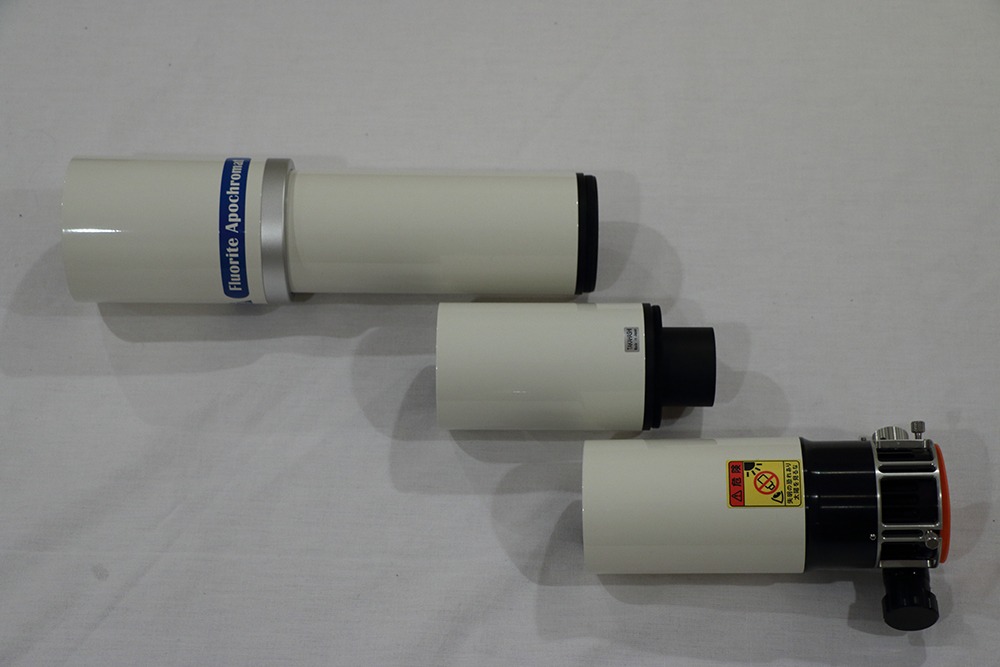
The three components of the FC-76Q, the FC-76 Objective Unit, the 1.7x CQ module, and the focuser unit.
One aspect of the base FC-76 that really surprised is planetary performance. In short, the scope behaves like it is a 4” telescope with the amount of low contrast surface detail it shows on our solar system neighbours. Spending quite a bit of time over 2018 with the FC-76Q, I have been unable to convince myself that it is really adding anything to the already very impressive planetary views. Perhaps if I was able to run a FC-76 side-by-side with the 76Q, I would have been able to spot some subtle differences, but the vagaries of a constant turbulent atmosphere and not having a second scope available means I am unable to conclude that there is any improvement. What I can say is that whether using the 76 or the 76Q, the image seen in the eyepiece is incredibly sharp and full of detail that belies its 3” aperture.
The Moon however requires a separate discussion. Having very accommodative eyes means I barely notice field curvature unless I specifically look for it. My first view of an almost full Moon at 68x using a 14mm Delos showed me that while I don’t notice a curving field, I really do see a totally flat field. It was spectacular. I may have said “wow” out loud. Dropping the magnification and allowing the Moon to drift across the field showed a tack sharp image from one side of the field-stop to other. While I lack the conviction to state categorically that the CQ module improves performance on the planets, on the Moon it most certainly does. I have never seen such a good view of our nearest celestial neighbour in a comparable aperture telescope.
That perfectly flat field also adds to the impressive views of extended deep sky objects, in particular open clusters. The FC-76 already delivers excellent DSO performance thanks to exceptional contrast and tight star images, especially from a dark sky site. With the CQ module, it is more of the same, with no loss of contrast despite more glass in the light path thanks to those wonderful coatings, but with a completely flat field, clusters of stars seem to sparkle just a little bit more.
Having developed an affinity for double stars over the last few years, likely a consequence of living in heavily light polluted central London, I do like to push every scope I use to see what they are capable of. I have achieved some splits with my base FC-76 that are considered a good test for a 4” scope. While I have not been able to improve on the remarkable performance at lower magnifications, the FC-76Q is as good as double-splitting telescope in this aperture class that I have ever had the pleasure to observe with.
Conclusion
In the preamble to this review, I referred to the FC-76Q as the Frankenstein Takahashi. The reality is despite being cobbled together from various donors, much like eponymous creation from fiction, the final telescope performs as those it was designed to always work as one.
While I have been unable to convince myself that the scope actually sharpened up performance on the planets and double stars, from the already impressive base FC-76, the last residual false colour seen on the most challenging of objects is eliminated, and the truly flat field, even to my accommodative eyes, means large open clusters and the Moon really do impress.
Even though the CQ module is “only” £301, which is cheap for Takahashi, I am not sure I would recommend purchasing the module if it is only for use with the FC-76 DCU as I did not see enough additional benefit to really justify the expense. However, if like me, you already own the FS-60Q and want the FC-76 objective unit / already own it, then you should definitely incorporate the module and point the scope at the Moon. I will not forget that first view, it really was stunning for such a small scope.
For anyone reading the review who already owns the FC-76, it must be the split tube DCU version rather than the DS or original DC where the CQ module cannot be fitted.






